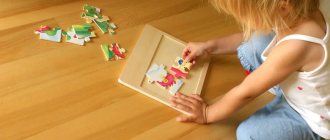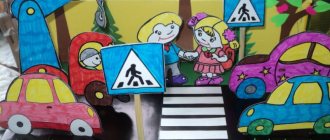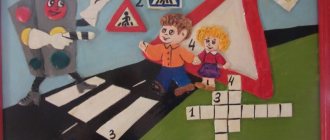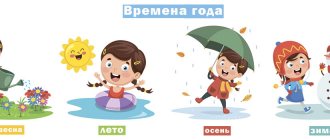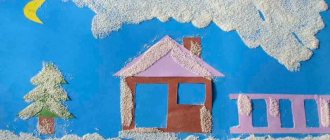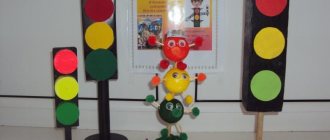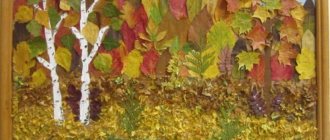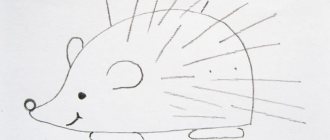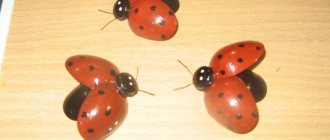Dymkovo toys are among the oldest Russian folk crafts (dating back to the 15-16th century). The craft originated in the territory of what is now the Kirov region, and most recently the patterns of this creativity were used in the design of the Winter Olympic Games in Sochi (2014). Also, these crafts are widely used to develop fine motor skills in preschool institutions. The most common option is the Dymkovo toy, which everyone calls “The Young Lady,” made using various techniques.
LiveInternetLiveInternet
Saturday, July 04, 2015 23:41 + to quote book
DIY DYMKOVO TOY Necessary materials: plastic bottle; sculpture plasticine or ordinary children's plasticine; paints; brush; flour; sharp scissors.
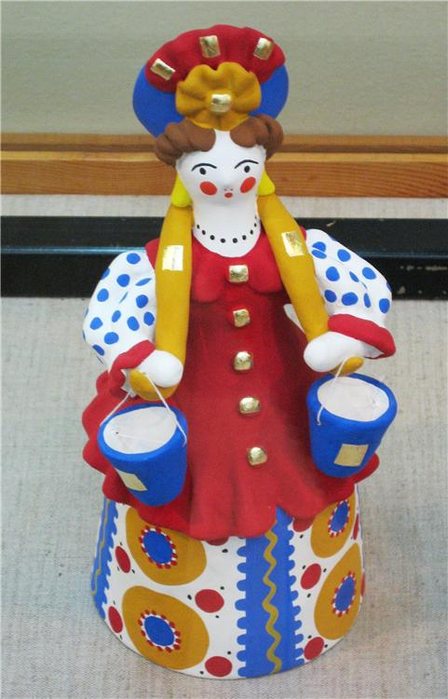
Manufacturing: * First of all, you need to cut off the neck of the bottle using sharp scissors. You should have a blank for the future Dymkovo toy (see photo).
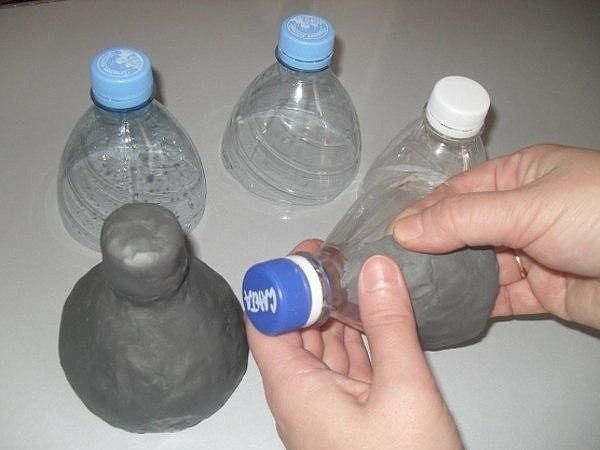
* Now you need to cover the resulting blank from a plastic bottle with plasticine. It is very important to make an even and neat layer without streaks or unevenness.
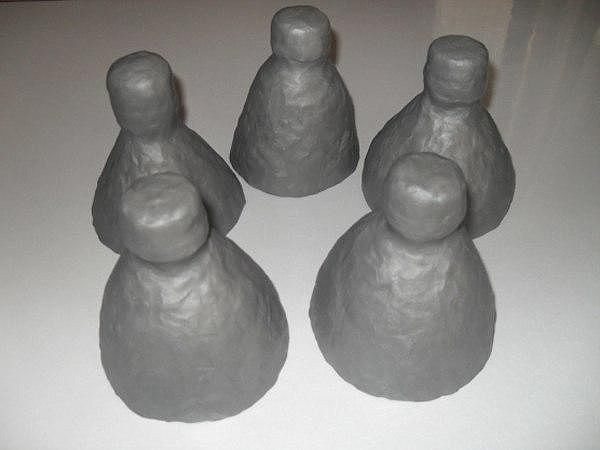
* Then build a small plasticine ball that will serve as the head in the future Dymkovo toy. Be sure to make a tall kokoshnik out of plasticine, braid a braid, wear a wreath, etc. Don’t forget about your hands, as well as all kinds of additional elements: basket, handbag, bucket, child, samovar, etc.
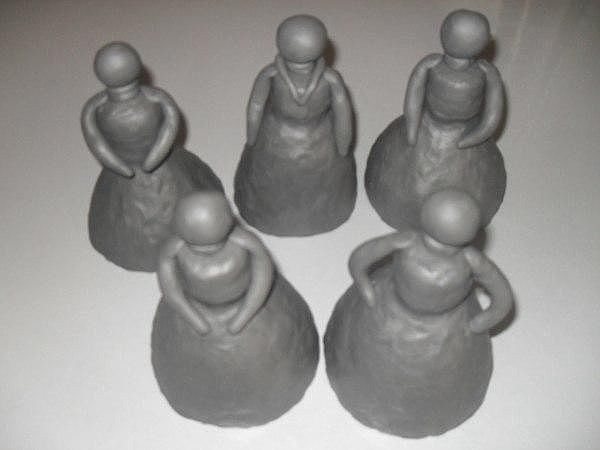
* Now the plasticine mold must be thoroughly coated with flour, this is necessary so that the paint (for example, gouache) adheres well and does not form drops.
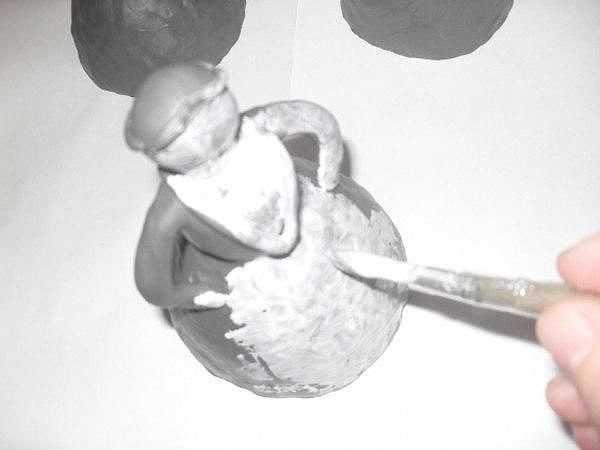
* Now you can start painting and decorating. Before you start painting, be sure to paint the entire figurine a single white color. Wait until the white layer dries and begin the creative process of painting.

* Below we attach some examples of patterns and colors that are used when decorating Dymkovo toys.
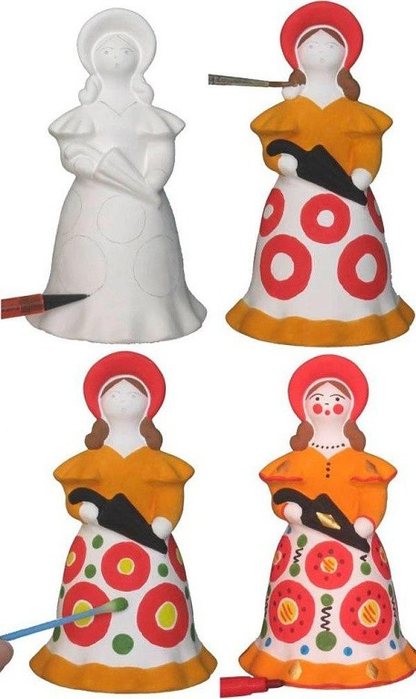
* Russian people have always been famous for their special ingenuity and sense of beauty. Apparently, therefore, the beginning of many decorative and applied arts originates precisely in Ancient Rus'. The News Portal decided to devote this article to another ancient craft that arose in Rus' more than four hundred years ago. We will talk about the famous Dymkovo toy. * The value of the Dymkovo toy lies in the fact that it is unique handmade. There are no two identical Dymkovo toys in the world, because even the same master cannot create two Dymkovo toys that are as similar to each other as two peas in a pod. Dymkovo toys are made from bright red clay, then fired and subsequently painted. * In this article we want to invite you to learn how to make Dymkovo toys with your own hands. Since we don’t have special ovens in our apartments, and it’s also not possible to get real bright red clay, we will make Dymkovo toys from scrap materials.
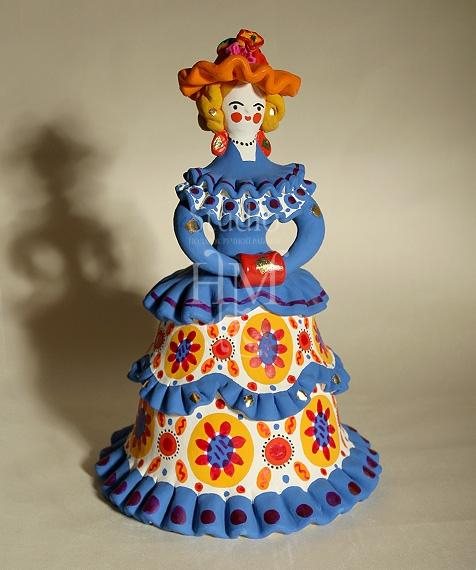
. * This technique will be interesting and understandable to both adults and children. So be sure to try it, and you will end up with something wonderful that you can play with, give as a gift, or place in your room as a piece of furniture.
Series of messages “DO YOUR OWN HANDS”:
Part 1 - Wool street art. Part 2 - Do some crafts! Part 3 - WOODEN TRELLISH - SUPPORT WITH YOUR OWN HANDS Part 4 - Modeling and painting of the Dymkovo lady. Part 5 - Wicker storage box with a lid and handles from old newspapers. Master class. Part 6 — PAVEMENT TILES WITH YOUR OWN HANDS.
Series of messages “Master Classes”:
Part 1 — Tilda’s Master Class “Dreaming Angel” Part 2 — Sewing lessons from Channel 1 “Good Morning” Part 3 — General questions on sewing technology master classes Part 4 — Modeling and painting of the Dymkovo lady. Part 5 - The most complete collection of video lessons from Marat Ka Part 6 - The most complete collection of video lessons from Marat Ka ... Part 12 - Storage box - continued. Weaving of top and handles. Part 13 - Master class on weaving from newspapers: Storage box Part 14 - Master class on weaving from newspaper tubes
Tags:
Dymkovo toy master class folk crafts clay crafts from a plastic bottle Zhostovo gestural Gzhel DIY Pavloposad shawls
Cited 8 times Liked by: 2 users
Like share
0
Like
- 2
I liked the post - Quoted
- 0
Saved
- Add to quote book
- 0
Save to links
Liked2
0
Presentation on the topic “Modeling a Dymkovo toy. Lady"
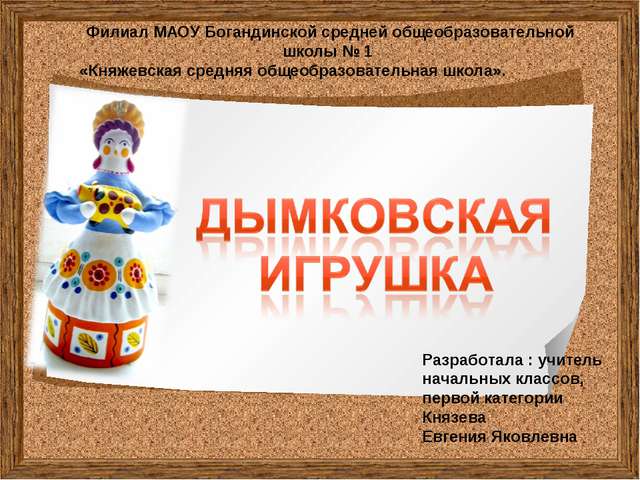
Description of the presentation on individual slides:
1 slide Description of the slide:
Branch of MAOU Bogandinskaya Secondary School No. 1 “Knyazhevskaya Secondary School”.
Developed by: primary school teacher, first category Knyazeva Evgenia Yakovlevna 2 slide Slide description: 3 slide Slide description: 4 slide Slide description:
What is Dymkovo famous for?
5 slide Description of slide: 6 slide Description of slide:
People loved songs and dances there, Evenings in winter are so long, Miracles were born in the village - fairy tales.
And they sculpted there from clay. . 7 slide Description of slide: 8 slide Description of slide: 9 slide Description of slide:
Steep sides, Golden horns, Frilled hooves, Egorka on the back.
Slide 10 Slide description:
Disperse, honest people!
Uncle sells piggy. Slide 11 Slide description:
Clay horses race on stands as best they can.
And you can’t hold on to the tail if you let go of the mane. 12 Slide description:
Surprised everyone with his outfit, spread his wings importantly.
That's a tall tale. What kind of miracle bird is this? Slide 13 Slide description:
Indy - indya, turkey, you look like a chest.
The chest is not simple - red, white, gold. Slide 14 Slide description:
The Dymkovo young ladies are more beautiful than anyone else in the world, And the darling hussars are your gentlemen.
Slide 15 Slide description:
Umbrella with a fungus, Hands with a pretzel.
A beautiful lady walks along the street. Slide 16 Slide description: Slide 17 Slide description:
Here are the painted toys, Vyatka laughter - Suburban dandies, townsfolk gossips.
18 Slide description:
Behind the icy water, the water carrier is a young lady, Like a swan swimming.
He carries full buckets. 19 slide Description of slide: 20 slide Description of slide: 21 slide Description of slide: 22 slide Description of slide: 23 slide Description of slide: 24 slide Description of slide:
The lady is ready.
Let's leave it to dry. 25 slide Description of slide: 26 slide Description of slide: 27 slide Description of slide:
Author: primary school teacher of the branch of MAOU Bogandinskaya secondary school No. 1 “Knyazhevskaya secondary school” Knyazeva Evgenia Yakovlevna

Professional retraining course
Primary school teacher

Refresher course

Refresher course
Find material for any lesson by indicating your subject (category), class, textbook and topic:
Select a category: All categoriesAlgebraEnglishAstronomyBiologyExtracurricular activitiesGeneral historyGeographyGeometryTo the director, head teacherExtra. educationPreschool educationNatural scienceArt, Moscow Art Foreign languagesInformaticsHistory of RussiaClass teacherCorrectional educationLiteratureLiterary readingSpeech therapy, defectologyMathematicsMusicPrimary classesGerman languageLifestyleSocial studiesEnvironmental worldNatural studiesReligious studiesNative literatureNative languageRussian languageSocial teacherTechnologyUkrainian languagePhysicsPhysical educationPhilosophyFrenchChemistryDrawingSchool psychologistEcologyOther
Select a grade: All grades Preschoolers 1st grade 2nd grade 3rd grade 4th grade 5th grade 6th grade 7th grade 8th grade 9th grade 10th grade 11th grade
Select textbook: All textbooks
Select a topic: All topics
You can also select the type of material:
general information
Material number: 192787
Similar materials
Leave your comment
Step by Step Painting - Painting on canvas with acrylic paint for the absolute beginner!
This painting website/blog is filled with easy acrylic painting tutorials for beginners designed by Tracy Kiernan!
Each tutorial has step-by-step images, written instructions, and videos to help you learn at home for FREE!
New and coming soon lessons on painting on acrylic canvas:
Quick links:
Helpful blog posts:
Paintings:
While I believe any of my paintings can be adapted and simplified for all ages and skill levels, these ones in particular are especially suitable for children! Most of them include traceable information that you can print and transfer to your canvas.
TO LEARN MORE!
Digital Downloads:
VIEW OTHER ELECTRONIC LESSONS!
Anyone can draw!
Drawing is a wonderful stress-relieving activity that helps you escape from life for a while. I believe that everyone has an inner artist, no matter how much experience they have in art and painting.
I also know how intimidating a blank canvas can be. That's why I created these guides to help walk you through all the steps so you don't have to think about all that complicated stuff! You CAN create something you will be proud of!
Preparing flour mixture for additional elements
Recipe for making dough for small parts:
- flour, well sifted - 1.5 cups;
- fine salt - 1 glass;
- glycerin - 4 tablespoons (tablespoons);
- wallpaper glue or starch - 2 tablespoons;
- water - 150-125 ml.
When preparing the mixture, you can use kitchen appliances, such as a mixer, to make the task easier. You can add food coloring to the dough, and then the manufacturing process will be similar to working with colored plasticine.
All stages of forming elements and sculpting are similar to the classical rules. The dough behaves in your hands like clay and plasticine. For the best result, you should knead the mass with a dense consistency and moderately elastic. In this case, all the frills will not lose their shape, and the body will retain the desired shape.
Dymkovo young lady from plasticine step by step
The process begins with preparing the workplace. First you need to take material for modeling. Several options can be used:
- ordinary colored plasticine;
- plain sculptural plasticine;
- polymer clay;
- hardening plastic.
A few items to prepare ahead of time:
- board or thick oilcloth;
- stacks (blades for work);
- product stand;
- acrylic paints (when working with single-color materials).
System of images and plots
If we compare the surviving images of the first products with modern examples of this folk art, we cannot help but notice that over hundreds of years their creators have stepped far forward. The toy got rid of the simplicity of its form and ornamentation and became more decorative, and the number of plots increased significantly.
Although craftsmen claim that no two figures are absolutely identical, five main typical groups can be distinguished:
- Female images (young ladies and mistresses, nannies and nurses with a child in their arms, water bearers). The ladies have corsets and crinolines, umbrellas in their hands, fashionable hats and outfits; nurses in kokoshniks, wide skirts, aprons with frills. Static figures full of majesty and dignity.
- Cavaliers are often depicted on horseback in profile. Compared to women's images, they are smaller in size and look simpler.
- Animals. Initially, figurines were created depicting totem animals: a ram, a goat, a deer, a bear, and images of various domestic animals were gradually added. A distinctive feature of this type: an upturned head and short legs, widely spaced. Often the figures are “dressed up” in bright colorful costumes of musicians with instruments in their hands.
- Birds (roosters, turkeys, ducks). Ducks have lush capes, roosters and turkeys have bright, curly tails.
- Compositions. They can include both people and animals. They present various scenes from Russian city and village life: tea drinking, folk festivals, sleigh rides and many others.
